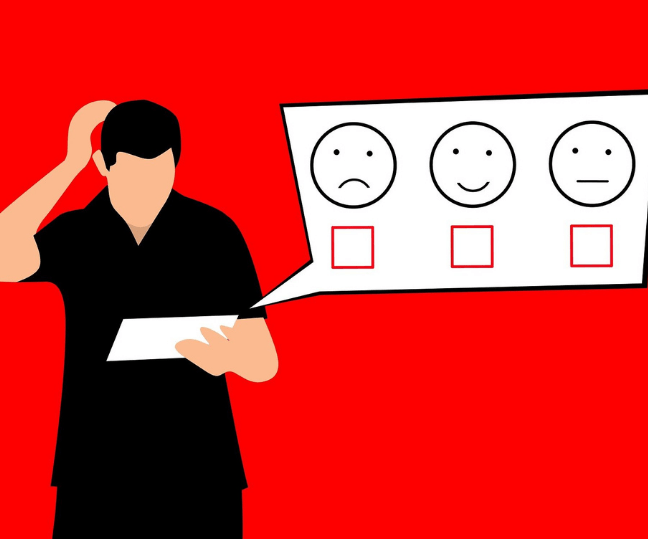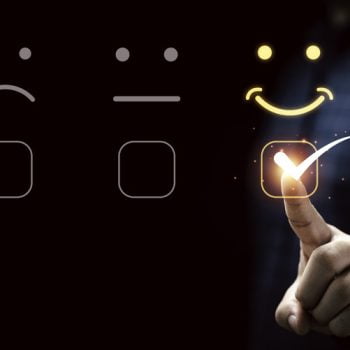Many factors—some justified, some not—cause customers to become rude or angry. As a customer service representative, you will probably encounter irritated or angry customers from time to time because you are in business to serve your customers.
95% of dissatisfied customers share their negative experiences with others personally or through social media/review sites. So, knowing how to handle angry customers and respond to them professionally is an absolute “must-have” for anyone working in customer-facing professions.
So, how can you handle angry customers in a way that allows you to provide them with the assistance they require without feeling offended in the process?
A step-by-step guide for handling angry customers while working in customer service
Here is our step-by-step guide for how to respond to angry customers and ideally find a suitable solution for all parties:
1. Take a breath
Firstly, take a deep breath before thinking about writing or sharing a response with the customer.
Even while you might not have been aware of it, as you were reading, your body probably started to tighten up; your shoulders probably began to move toward your ears. You might have even started to feel annoyed with your customer subconsciously. Without your knowledge, all of that happened before you even had an opportunity to speak with the customer or grasp their perspective.
So take a deep breath and steady yourself before you respond.

2. Be a good listener
An angry customer usually wants to vent. For better or worse, you are the one they vent to. Patient active listening can diffuse a situation as long as the customer feels heard.
Make an effort to listen actively rather than passively. Active listening involves focusing on whatever the customer says to ensure that you understand their issue. Passive listening refers to taking in only a portion of the message and failing to attend to the emotions driving the customer entirely.
Give the customer your full attention and be present.
Let them speak. Once they have finished speaking, summarize what you heard and make any additional inquiries necessary to understand their concern fully. Here, body language may be highly crucial. If you are in person, maintain eye contact, sit or stand up straight, and not cross your arms. Show them that you care.
If it is a message or an e-mail, think before responding. Carefully read the customer’s inquiry. Rather than focusing on the anger hidden beneath their words, please pay attention to what they say.
3. Do not take it personally
Do not forget that this is a business matter. Remind your customer service representative not to take a customer’s anger personally. They do not have a personal beef with the agent. They are dissatisfied with the product or service. When they bought a product, they had a specific expectation, but there was an issue.
If you take a customer’s problems personally, you risk being upset or even furious with them, which makes the situation worse. You may achieve a better outcome by defusing a crisis while being professional and displaying empathy and understanding.
Taking a complaint personally also lowers your mood, which harms your general level of productivity and mental health. This makes maintaining objectivity important.
4. Acknowledge your customers’ feelings
Spend a minute validating your customer’s feelings before moving on to problem-solving. Try something as simple as telling them that you are aware of their pain. If your company makes a mistake, you can also say, “You are correct,” or apologize.
Take advantage of the chance to appeal to your customer’s emotions. Provide context if your team made a mistake. Let them know what caused their pain, whether it was unexpected sick time or pandemic demands. This context makes it clear to your customer that everyone—including the customer support representative they’re cursing at—is merely doing their best.
Whatever you say, acknowledge the mistake with sincerity and specificity, as most customers can figure out when you are lying.
5. Empathize with them
Your response and reaction to an angry customer need to be empathetic. Being empathic does not always mean agreeing with the customer; it implies that you are capable of meeting them where they are and that you have a deep understanding of their emotions.
You will be able to relate to the customer more deeply if you genuinely understand how they feel. When having unpleasant conversations with customers, demonstrating empathy will help defuse the situation and demonstrate to the customer that you value and respect them.

6. Stay calm
All businesses interacting with customers should maintain a professional demeanor in their training programs. Representatives must develop the ability to control their frustration.
It could be tempting to emulate the customer’s tone of voice when responding to an angry customer. However, this will only make the matter worse.
“The customer is always right” holds valid here. By choosing the shortcut and caving to a customer’s degree of hostility, you stand to lose far more. Reputation management should always be a priority since treating someone with contempt or disrespect can reflect poorly on you and your business.
Keep in mind that people frequently mimic the emotional cues you give off. So, you cannot anticipate a friendly and understanding response from the customer if you respond angrily and confrontationally.
7. Clearly define your next steps
Often, you will not be able to soothe your angry consumer immediately. When that occurs, it is even more important to explain exactly how your team will resolve the problem and what to anticipate.
You should provide a road map for how you intend to solve our customers’ problems. This road plan outlines what you will do for the customer immediately, what will happen next, and when the customer can anticipate a solution.
Set expectations with your customers by outlining clear next steps. Your customer will not need to phone you every hour for an update if they know when you will follow up or fix their issue.
8. Use the customer’s name
A name carries power. By addressing the customer by their name, you can put a face to the person. It adds to a high degree of personalization in the exchange. When dealing with angry customers, this is far more effective than addressing an anonymous entity that may be anyone.
“A name represents identity, a deep feeling, and holds tremendous significance to its owner.” — Rachel Ingber.
Using the customer’s name demonstrates your care for them and reminds them that you are a natural person working for a real business. By using their name, you can also show your respect for them.
9. Explore all possible solutions
Consider a scenario where your customer demands a refund, but you know this is not an option. Even so, you should still approach your management and request it. By doing this, you show your customer that you are attempting to do everything you can to assist them.
Even if the end is the same, demonstrating your willingness to put in the effort and not go for the easy solution will go a long way.
10. Ask your team for help
Never be hesitant to ask for help when confronted with uncomfortable circumstances, such as when a customer uses vulgar, sexist, or other inappropriate language.
If you are unsure whether you need to end customer interaction, ask management to visit and do an unbiased analysis of the situation. They may assess the problem and decide what the best course of action is for you and the customer.
If you are unsure how to resolve a customer complaint, your team members and management can help. For more technical inquiries, get in touch with your product or engineering team, or ask other customer support representatives how they handled a comparable situation.
How do you handle an angry customer? (with templates)
Here are a few examples of how to respond to an angry customer
1. Initial response template
It is recommended to send an initial reply e-mail confirming that the customer’s message has been received if you do require additional time to respond to a specific request. Be sure to express regret for the inconvenience and commit to replying within a particular period.
Hey, <Customer Name>
Your support request regarding [customer complaint] has been received, and we are attempting to resolve the problem. I sincerely apologize for any inconvenience you may have encountered, and we are dedicated to finding a solution as soon as possible. We value your patience and anticipate providing you with a solution by [day and time].
Have you had a chance to look through [issue-related resources] in the meantime? They could provide additional insight into the problem.
Sincerely,
<Agent Name>
2. Technical issues template
When erratic service or back-end failures arise, tech businesses and service providers must apologize. It is imperative to clarify what went wrong and apologize for the inconvenience it caused.
Hello, <Customer Name>
We are genuinely sorry for the inconvenience these problems must have given you. We have reimbursed your subscription cost for this month to make it up to you.
It seems that [explanation] was the cause of the issues you encountered. We have located the problem’s root cause and are working hard to put a fix in place as soon as possible. By [anticipated time], everything should be resolved. When access is back, we will contact you to let you know.
Again, we apologize once more for any inconvenience this may have caused. If you need any extra help, please get in touch with us.
Sincerely,
<Agent Name>
- Phone
Whether justified or not, the most crucial response to a customer’s angry behavior is to express empathy and compassion. Begin with a sincere apology and then provide a plan to fix the problem.
Phone script examples on how to respond to an angry customer
1. I am genuinely sorry for what happened. Let me try to fix this.
2. What a terrible thing to hear. Can you describe what happened in detail so I can help?
3. I am genuinely sorry for the mistake we made. Let me see if there is anything I can do to change your order.
4. I want to express my heartfelt apologies for such inconvenience. We appreciate you alerting us about this.
5. I apologize and will do everything in my power to assist you, <Customer Name>, but I won’t be able to fix this problem unless you can respond to my inquiries and have a calm conversation.
- Live chat
Here are some live chat examples on how to respond to an angry customer
1.Hey, <Customer Name>. I’m sorry you had to deal with this issue. Let me check to see if I can solve it right away.
2. I regret learning that you had a bad experience. Please tell me what happened, and I will try my best to make it right.
3. I am very sorry and know how you are feeling right now. To ensure that we address this as soon as possible, I’m sending your request to the appropriate person immediately.
Final thoughts
Although it can be challenging, dealing with angry customers is not impossible. It’s almost like an art to executing it well, giving the business a chance to adopt a growth mindset.
When responding to an angry customer, the most crucial thing a customer representative can do is to give them a chance to vent. Treat them with respect, patience, and empathy to find a solution.
Utilizing these strategies for dealing with angry clients will place your business on a track to success and give your team the resources they require to transform a dire circumstance into a pleasant customer service experience.


















